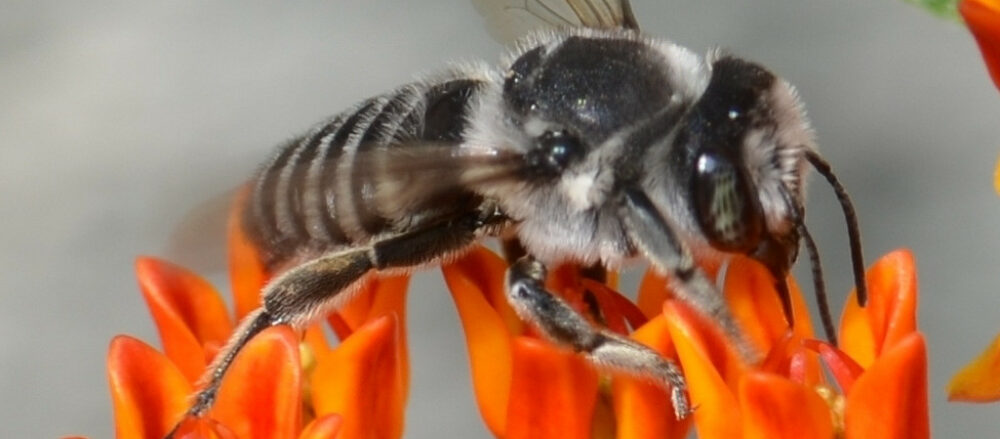A neighbor of mine got his question published in Randy Cohen’s weekly column, The Ethicist, in Sunday’s New York Times:
“I’m told it is illegal to propagate and sell this tree because the National Geographic Society (NGS) has exclusive rights to it in the United States, but would I be unethical to do so?”
– Pine Away, The Ethicist, NY Times, April 20, 2008
The tree in question, Wollemia nobilis, the Wollemi™ Pine (and note the trademark), is critically endangered in the wild:
The pine was known solely from fossil records and presumed extinct until it was discovered in 1994 in the Wollemi National Park, just outside Sydney, Australia. Dubbed the botanical find of the century, the Wollemi pine is now the focus of extensive research to conserve this ancient species.
Fewer than 100 mature trees are known exist, growing in small groves on moist ledges in a deep rainforest gorge surrounded by rugged mountains and undisturbed forest.
– Wollemi Pine (Wollemia nobilis) at Brooklyn Botanic Garden
The trademarked name situation arises – ironically, to my mind – from efforts to protect and conserve the species:
Through National Geographic’s licensing partnership with Floragem, a portion of the sales will go directly to Wollemi Pine International Pty. Ltd., whose mission is to conserve the Wollemi Pine for future generations and to raise awareness of conservation internationally. Through public participation, Wollemi Pine International will repopulate the Wollemi Pine and return royalties to fund conservation of these trees and other threatened and endangered species.
– Press Release, National Geographic Society, September 19, 2006
The Ethicist, Randy Cohen, responded:
Liz Nickless, a spokeswoman for the society, says that “there are no exclusive agreements for the distribution of the Wollemi pine.” There is a U.S. trademark, she adds, “so anyone wanting to use the name will need permission.” That is, you may become a Johnny Wollemi Seed, disseminating this fine fir under its scientific name, Wollemia nobilis, or for that matter as Sexy Slender Tree or Pinetacular, but not (without consent) as a Wollemi Pine.
While trademarks govern the use of the name, plant patents proscribe unlicensed propagation:
A plant patent is granted by the Government to an inventor (or the inventor’s heirs or assigns) who has invented or discovered and asexually reproduced a distinct and new variety of plant, other than a tuber propagated plant or a plant found in an uncultivated state. The grant, which lasts for 20 years from the date of filing the application, protects the inventor’s right to exclude others from asexually reproducing, selling, or using the plant so reproduced.
[emphasis added]- What is a plant patent?, Overview of Plant Patents, U.S. Patent and Trademark Office
This example comes from the U.S. Patent Office; similar laws and regulations govern in other countries.
More and more of the varieties I see available for sale are labelled “PPAF” (Plant Patent Applied For) or “PP #XXXXXX”, the plant patent number. So what happens when I need to divide my patented perennial?
Asexual reproduction is the propagation of a plant to multiply the plant without the use of genetic seeds to assure an exact genetic copy of the plant being reproduced. … asexual reproduction would include but may not be limited to:
- Rooting Cuttings
- Grafting and Budding
- Apomictic Seeds
- Bulbs
- Division
- Slips
- Layering
- Rhizomes
- Runners
- Corms
- Tissue Culture
- Nucellar Embryos
When I divide my patented perennial – or god forbid, share it with a neighbor – I’m breaking the law. I could choose to disregard it, or I could choose not to support this system and boycott patented plants altogether.
That F1 hybrid vegetable is a manufactured product and won’t come true from seed; its selection and use maintains a dependency on its manufacture and distribution. An open-pollinated heirloom variety can be propagated indefinitely, and shared with others;, a model for sustainable gardening.
As gardeners, the choices we make affect our world, however indirectly. With some reflection, we can reduce the risk of unintended consequences in conflict with out intents. We can choose gardening practices to express our values through action.
Links
Press Release, National Geographic Society, September 19, 2006
The Wollemi Pine Conservation Club
Wollemi Pine (Wollemia nobilis) at Brooklyn Botanic Garden
Overview of Plant Patents, U.S. Patent and Trademark Office
Name that Plant – The Misuse of Trademarks in Horticulture, Tony Avent, Plant Delights Nursery, 2007.12.25 [Added 2008.05.31]
